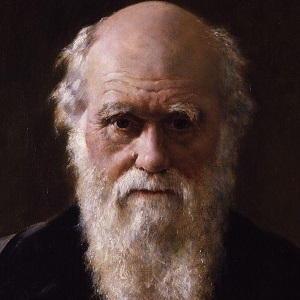The train trip across the Southern Alps of New Zealand was billed as five solid hours of verdant alpine meadows dotted with high country sheep interspersed with braided rivers descending from glaciers. Yes, I did get occasional glimpses, but I was also challenged by the subtler beauty of heavy mist. When all else failed during periodic white-outs, I entertained myself by staring at the head of the man sitting in front of me. It wasn’t his baldness that captivated me. It was his sun-damaged skin.
He was an elderly man, and his mottled scalp suggested a lifetime in the sun. I imagined him as a sheep-farmer spending unwitting hours directly beneath the ragged hole in the ozone layer. His pinkish skin looked paper-thin and shiny, and salmon colored splotches were strewn across his crown. I could see the crusty tip of an earlobe.
This panorama created an intriguing coincidence with the book that I brought along to fill our idle travel hours. I had wanted a seminal book that had impacted our Western world, one that I had heard about but never read. My three candidates were the Bible, the works of Charles Darwin and Hitler’s Mein Kampf. I could always leaf through a Gideon Bible at one of our hotels, and thought it might be a bit off-putting if I toted around a copy of Mein Kampf, so I settled on Darwin’s classics.
It turns out human’s general lack of body hair created enormous problems for Darwin. In fact, the sight of sun-damaged skin would have driven Darwin to distraction. The basic premise of natural selection is that evolution produces only very small incremental and beneficial changes contributing to the survival of the fittest. Any maladaptive mutation would be ultimately weeded out, discarded on the mountainous ash heap of failed experiments.
I imagined the 22 year-old Darwin standing in front of his mirror on his ship the Beagle. He notices the skin of his face and neck are puce and pulsating from his day under the relentless equatorial sun. He realizes that he forgot his pith helmet in his enthusiasm over his iconic finches, whose perfectly adapted beaks were a deft testament to natural selection.
But now, as he looks at his peeling skin, he wonders, “My hairlessness is definitely working against me here. After all, among terrestrial mammals, I am the only one who is naked. What is the overriding benefit?” As he speaks, a piece of skin flakes off and falls into the sink, leaving behind a vulnerable pink patch.
Darwin knew there were many animal oddities that did not fit neatly into his paradigm of survival of the fittest, including not only hairlessness, but also the peakcock’s unwieldy tail. Beautiful yes, but surely these clumsy birds would be easy prey. In a letter to his American botanist Asa Grey, he wrote, “Every time I see a peacock’s tail, it makes me sick.”
Unlike Darwin, who was curious about everything, I have taken the human body plan too much for granted. Apes are hairy, I am not. To me, that has just been a basic fact of life, but Darwin was convinced that science could explain everything, and in 1871, 12 years after he published the Origin of the Species and 40 years after the voyage of the Beagle, he published the Descent of Man. Together these two books were his version of a Theory of Everything.
Darwin felt that sexual selection could explain the animal oddities that were driving him crazy. It was all about mate choice, wrote Darwin in the Descent of Man. At some point in our distant past, men and women simply found nudity more attractive than hairiness. He wrote, “the view which seems to me the most probable is that man, or rather primarily women, became divested of hair for ornamental purposes.” Sexual selection was his justification for the concept of beauty.
Darwin’s theory met with a cool reception. In his Victorian age men were reluctant to admit the possibility that inferior women were driving evolution through their mate choice. The second obstacle was that the theory assumed that animals, such as the peacock, had an aesthetic sense. The prevailing logic of the primacy of man demanded that a sense of beauty be limited to civilized fair-skinned humans with dominion over their savage brethren and the rest of the animal kingdom.
His colleague Alfred Russel Wallace proposed an alternative view, essentially a theory of intelligent design. He wrote, “The naked and sensitive skin, by necessitating clothing and houses, would lead to more rapid development of man’s inventive and constructive faculties and by leading to a more refined feeling of personal modesty may have influenced to a personal extent his moral natures.” Wallace believed that some higher power had turned the negative of sun-sensitive skin into a positive force for humans’ iconic sense of morality.
The controversy surrounding human hairlessness has persisted. Several different survival advantages have been proposed. For example, as humans moved from the cool forests to the open savannahs, head-to-toe hair would have been oppressively hot. Humans were also evolving into hunters and hair could have slowed them down as they chased after game. Another theory proposes that naked humans could easily demonstrate they were not plagued with ticks, louses or other parasites undermining their fitness as a mate. This theory has even spawned genetic research to determine when lice diverged into separate populations of head and pubic lice, an indirect estimate of when humans went hairless.
As I sat on the train I decided to put my faith in Darwin and ponder the ornamental aesthetics of the head in front of me. I narrowed my eyes to focus on a small patch of the man’s scalp and I realized that I might have seen this same salmon/pink color combination and splotchy amoebic pattern on designer dresses. The sun briefly glinted, adding a moment of shimmer to the overall effect. I reimagined my dress with a bit of reflective material sewn in. Stunning. Yes out of context, this sun-damaged skin did have an aesthetic appeal.
A momentary gap in the mist shattered my dreams of red carpet glamour. As the man turned to look out the window, I got a full frontal of his pocked face adorned with dangling scabs. His enlarged nose had the consistency of a puffy and cracked soufflé. I found it impossible to believe that this ravaged skin would fit into Darwin’s concept of aesthetic ornamentation. I only hoped that my man had abandoned mate selection years ago and was heading home to the weather-beaten face of a loyal wife.
I closed my eyes and now imagined Darwin as an older man, perhaps 62, the age when the Descent of Man was finally published. I saw him again standing in front of the mirror, his hand skimming over his bald head and tracing his corrugated face. He is reminded that an elderly man must refresh his ornaments if he wants to satisfy a lusty libido. Darwin smiles as he straightens his tuxedo and reaches for his gold-tipped cane, confident that these symbols of wealth and respect will more than compensate for the unblemished face of his remote youth.
Follow Liza Blue on:
Share:



